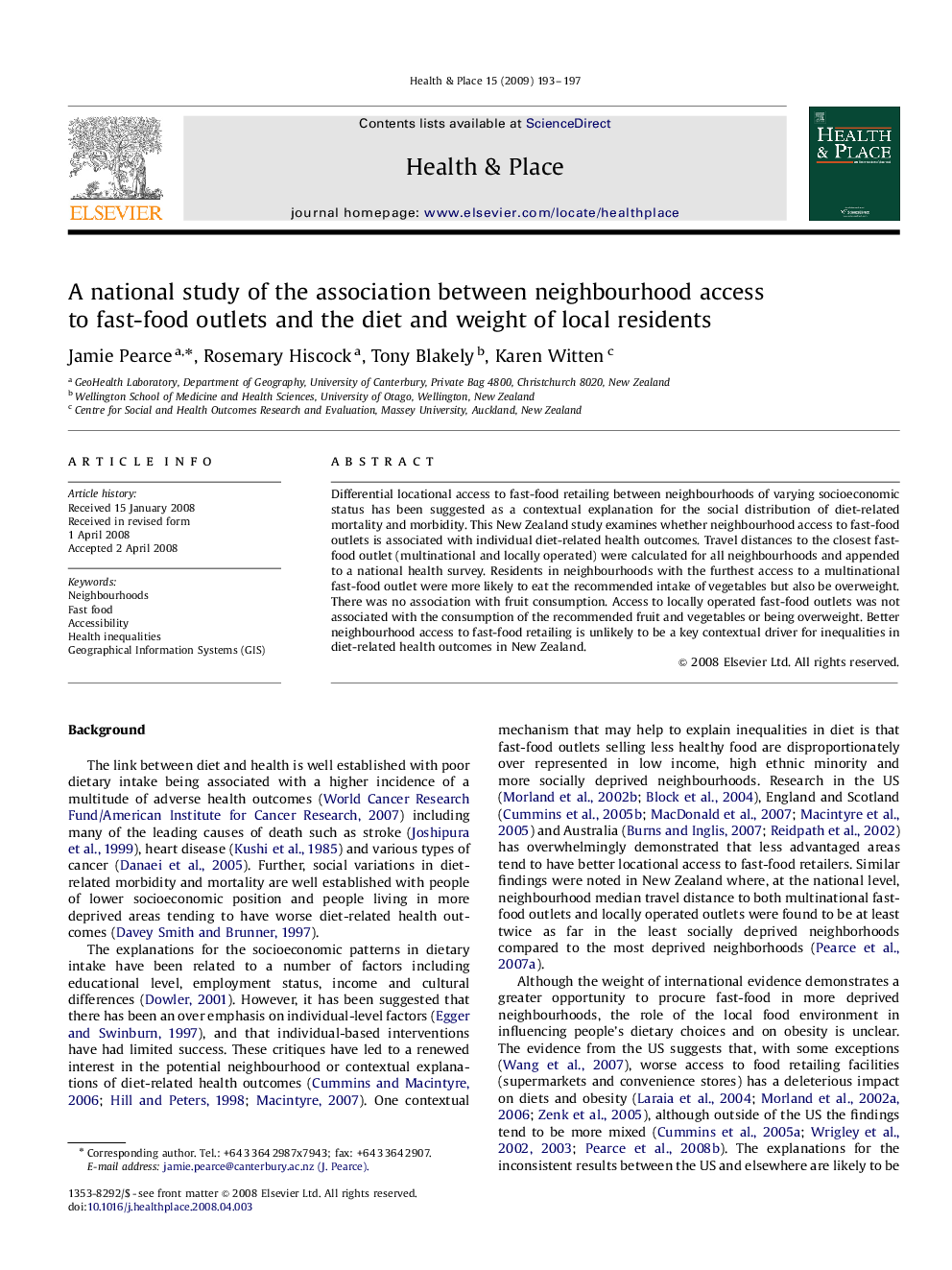| Article ID | Journal | Published Year | Pages | File Type |
|---|---|---|---|---|
| 10502968 | Health & Place | 2009 | 5 Pages |
Abstract
Differential locational access to fast-food retailing between neighbourhoods of varying socioeconomic status has been suggested as a contextual explanation for the social distribution of diet-related mortality and morbidity. This New Zealand study examines whether neighbourhood access to fast-food outlets is associated with individual diet-related health outcomes. Travel distances to the closest fast-food outlet (multinational and locally operated) were calculated for all neighbourhoods and appended to a national health survey. Residents in neighbourhoods with the furthest access to a multinational fast-food outlet were more likely to eat the recommended intake of vegetables but also be overweight. There was no association with fruit consumption. Access to locally operated fast-food outlets was not associated with the consumption of the recommended fruit and vegetables or being overweight. Better neighbourhood access to fast-food retailing is unlikely to be a key contextual driver for inequalities in diet-related health outcomes in New Zealand.
Keywords
Related Topics
Health Sciences
Medicine and Dentistry
Public Health and Health Policy
Authors
Jamie Pearce, Rosemary Hiscock, Tony Blakely, Karen Witten,
